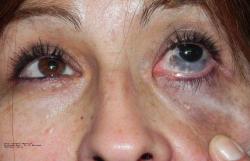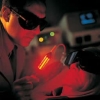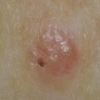Trattamento del nevo di Ota con un laser Q-switched Nd:YAG a bassa fluenza
 Il nevo di Ota, causato dalla melanocitosi cutanea, è esteticamente fastidioso per i pazienti asiatici. La distruzione della melanocitosi dermica con i sistemi laser Q-switched comporta comunque un elevato rischio di iperpigmentazione/ipopigmentazione postinfiammatoria. Metodi
Il nevo di Ota, causato dalla melanocitosi cutanea, è esteticamente fastidioso per i pazienti asiatici. La distruzione della melanocitosi dermica con i sistemi laser Q-switched comporta comunque un elevato rischio di iperpigmentazione/ipopigmentazione postinfiammatoria. Metodi
Sono stati inclusi nello studio 19 pazienti Coreani (5 maschi e 14 femmine; pelle Fitzpatrick di tipo IV) a cui era stata fatta precedentemente una diagnosti clinica di nevo di Ota, in modo da determinare l'utilità, la sicurezza e i problemi relativi al laser Q-switched Nd:YAG da 1064 nm a bassa fluenza per il trattamento della stessa affezione. Ad intervalli di due settimane, sono stati eseguiti i trattamenti laser a basse fluenze con il laser Q-switched Nd:YAG collimato. La fluenza dei trattamenti laser è stata fissata a 2.5 J/cm2 e regolata in base alla sensibilità al dolore e alla risposta del paziente alla precedente sessione di trattamento; inoltre, il trattamento è stato continuato fino a quando le lesioni non hanno mostrato un lieve eritema.
Risultati
Il numero medio di sedute di trattamento è stato di 17.1 (range 6-32). Tra i 19 pazienti, 18 hanno quasi raggiunto il miglioramento totale, mentre un paziente è stato vicino a raggiungere il miglioramento totale dopo 11 sedute di trattamento. La fluenza media del trattamento è stata di 2.5 J/cm2 (range 2.0–5.0 J/cm2) e cinque pazienti si sono lamentati di una risposta palpebrale ritardata. Inoltre, in un paziente è stata osservata un'iperpigmentazione successiva alla terapia.
Conclusione
Il laser Q-switched Nd:YAG a bassa fluenza da 1064 nm è un metodo efficace per il trattamento del nevo di Ota con una bassa incidenza di effetti collaterali essendo un trattamento facile da eseguire e con un basso tempo di inattività.
Storia della pubblicazione:
Titolo: Treatment of nevus of Ota using low fluence Q-switched Nd:YAG laser
Rivista: International Journal of Dermatology. doi: 10.1111/ijd.12085
Autori: Chong Won Choi, Hee Jung Kim, Heun Joo Lee, Yoon Hwan Kim, Won-Serk Kim
Affiliazioni:Department of Dermatology, Kangbuk Samsung Hospital, Sungkyunkwan University School of Medicine, Seoul, Korea Kangskin Clinic, Seoul, Korea
Abstract:
Background Nevus of Ota, caused by dermal melanocytosis, is cosmetically troublesome in Asian patients. The destruction of dermal melanocytosis using Q-switched laser systems carries a high risk of postinflammatory hyperpigmentation/hypopigmentation. Methods To determine the usefulness, safety, and adverse problems of low fluence 1064 nm Q-switched Nd:YAG laser in the treatment of nevus of Ota, 19 Korean patients (five male and 14 female; Fitzpatrick skin type IV) who were clinically diagnosed as having nevus of Ota were enrolled in the present study. Low fluence laser treatments were performed with a collimated Q-switched Nd:YAG laser at intervals of two weeks. The fluence of laser treatments was set at 2.5 J/cm2 and adjusted based on patient response to the previous treatment session and sensitivity to pain. Treatment was applied until the lesions showed mild erythema. Results The mean number of total treatment sessions was 17.1 (range 6–32). Among the 19 patients, 18 reached near total improvement, while one patient failed to reach near total improvement after 11 treatment sessions. The mean fluence of treatment was 2.5 J/cm2 (range 2.0–5.0 J/cm2). Five patients complained of delayed eyelid response. Post-therapy hyperpigmentation was observed in one patient. Conclusion Low fluence 1064 nm Q-switched Nd:YAG laser is an effective modality for the treatment of nevus of Ota with a low incidence of side effects. It is an easy to perform treatment with low downtime.





